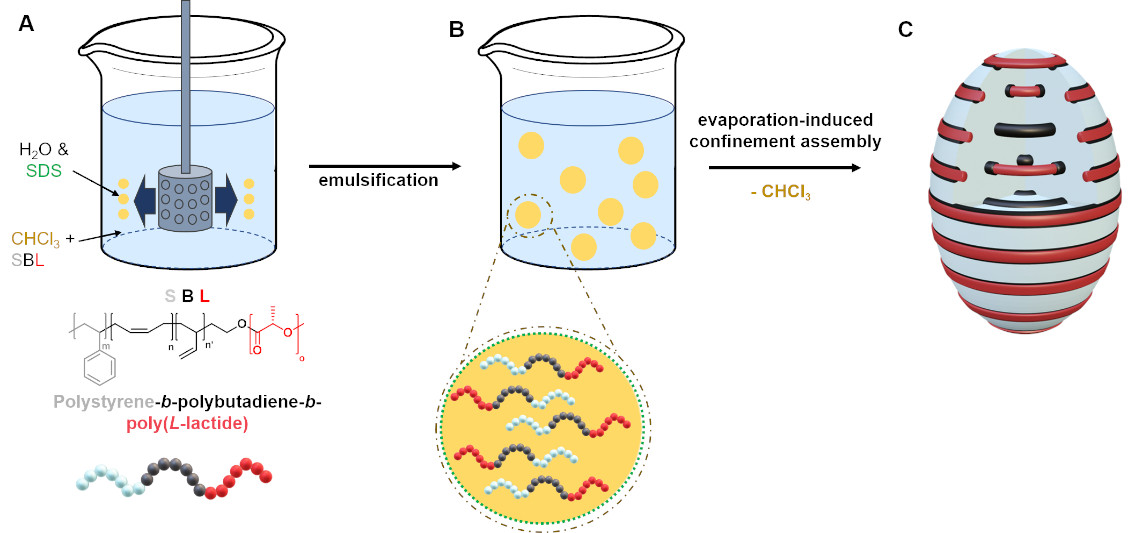News
Morphology and Degradation of Multicompartment Microparticles Based on Semi-Crystalline Polystyrene-block-Polybutadiene-block-Poly(L-lactide) Triblock Terpolymers
13.12.2021
Nicole Janoszka, Suna Azhdari, Christian Hils, Deniz Coban, Holger Schmalz, and André H. Gröschel
Polymers 2021, 13(24), 4358, https://doi.org/10.3390/polym13244358
The confinement assembly of block copolymers shows great potential regarding the formation of functional microparticles with compartmentalized structure. Although a large variety of block chemistries have already been used, less is known about microdomain degradation, which could lead to mesoporous microparticles with particularly complex morphologies for ABC triblock terpolymers. Here, we report on the formation of triblock terpolymer-based, multicompartment microparticles (MMs) and the selective degradation of domains into mesoporous microparticles. A series of polystyrene-block-polybutadiene-block-poly(L-lactide) (PS-b-PB-b-PLLA, SBL) triblock terpolymers was synthesized by a combination of anionic vinyl and ring-opening polymerization, which were transformed into microparticles through evaporation-induced confinement assembly. Despite different block compositions and the presence of a crystallizable PLLA block, we mainly identified hexagonally packed cylinders with a PLLA core and PB shell embedded in a PS matrix. Emulsions were prepared with Shirasu Porous Glass (SPG) membranes leading to a narrow size distribution of the microparticles and control of the average particle diameter, d ≈ 0.4 µm–1.8 µm. The core–shell cylinders lie parallel to the surface for particle diameters d < 0.5 µm and progressively more perpendicular for larger particles d > 0.8 µm as verified with scanning and transmission electron microscopy and particle cross-sections. Finally, the selective degradation of the PLLA cylinders under basic conditions resulted in mesoporous microparticles with a pronounced surface roughness.


